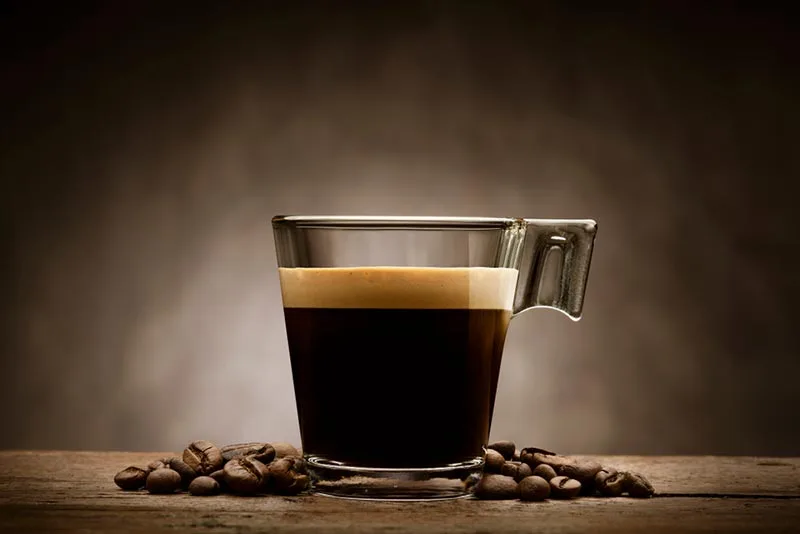When it comes to coffee, the options are as rich and varied as the flavors in your cup. But for many people, the difference between coffee and espresso isn’t entirely clear. They both come from the same beans, after all—so what sets them apart?
In this article, we’ll explore the real distinctions between coffee and espresso, from the brewing methods and flavors to the cultural significance and caffeine content. Whether you’re a casual drinker or a budding barista, this guide will help you discover which type suits your lifestyle and taste preferences best.
What Is Coffee?
“Coffee” generally refers to a beverage made by brewing roasted and ground coffee beans with hot water. There are several popular brewing methods, including drip brewing (using a coffee maker), pour-over, French press, and cold brew.
Each method brings out different characteristics of the coffee bean, such as acidity, body, and aroma. The grind size and brewing time can greatly influence the final flavor.
Common Characteristics of Coffee:
- Milder Taste: Coffee tends to have a smoother, lighter flavor compared to espresso.
- Larger Serving Size: A typical cup of coffee is about 8–12 ounces.
- Lower Caffeine Concentration: While an 8-ounce coffee may contain more total caffeine than a shot of espresso, it’s less concentrated per ounce.
- More Customization: With coffee, you can experiment with different roasts, grind sizes, and brewing times to personalize your cup.
What Is Espresso?
Espresso is a type of coffee, but it’s brewed differently and served in a concentrated form. It is made by forcing hot water under high pressure through very finely ground coffee beans. The process takes around 25–30 seconds and yields a small, strong shot—usually about 1 ounce.
Espresso is the base for many popular drinks like cappuccinos, lattes, macchiatos, and Americanos.
Common Characteristics of Espresso:
- Bold and Intense: Espresso has a stronger flavor, often described as rich, robust, or even slightly bitter.
- Smaller Serving Size: A standard espresso shot is only 1–1.5 ounces.
- Higher Caffeine Concentration: Ounce for ounce, espresso contains more caffeine than regular coffee.
- Crema on Top: A hallmark of espresso is the light, golden foam layer called “crema,” which indicates a well-extracted shot.
Brewing Methods: The Key Difference
The most fundamental difference between coffee and espresso is the brewing method.
- Coffee Brewing: Typically uses gravity (drip, pour-over) or steeping (French press) to extract flavor slowly, usually over several minutes.
- Espresso Brewing: Requires specialized equipment (an espresso machine) that uses high pressure to brew quickly, in under a minute.
This difference results in variations in taste, caffeine content, texture, and even the oils extracted from the coffee grounds.
Equipment and Skill Level
- Coffee: You can make a good cup of coffee with minimal equipment. A drip machine or a French press is enough to get started, and both are beginner-friendly.
- Espresso: Brewing a proper espresso takes practice and more precise equipment. A good espresso machine, burr grinder, and some trial and error are needed to pull the perfect shot.
If you’re just starting your journey into the world of coffee, brewing a drip or pour-over might be the best place to begin.
Taste Preferences
The choice between coffee and espresso often comes down to personal taste.
- If you enjoy sipping slowly, appreciating nuanced flavors, and drinking a larger volume, then regular coffee may be your best bet.
- If you like bold, rich, concentrated flavors and appreciate quick, energizing doses, then espresso might be more your style.
Also, espresso drinkers tend to appreciate the artistry and precision behind every shot, which makes it a favorite among enthusiasts and baristas alike.
Caffeine Content: A Common Misconception
Many people assume espresso has more caffeine simply because it tastes stronger. While it does have a higher concentration of caffeine per ounce, a full cup of brewed coffee usually contains more caffeine overall.
Here’s a rough comparison:
- 1 shot of espresso (1 oz): About 63 mg of caffeine
- 1 cup of brewed coffee (8 oz): About 95 mg of caffeine
So, if you’re looking for a stronger jolt per sip, espresso is the winner. But if you want sustained caffeine over a longer time, a big mug of coffee might be more satisfying.
Cultural and Lifestyle Factors
In many cultures, espresso is a part of daily life. In Italy, for instance, people often enjoy quick shots of espresso at coffee bars throughout the day. In contrast, in the United States and other countries, a large mug of coffee is often sipped during morning routines or while working.
Consider your lifestyle:
- On the Go? Espresso offers a quick hit of energy in a small package.
- Leisure Time? Coffee invites you to slow down and savor the moment.
Which Should You Choose?
Ultimately, there’s no right or wrong answer—only what fits your taste, schedule, and mood. In fact, many coffee lovers enjoy both coffee and espresso at different times of day or for different occasions.
If you have time in the morning, brew a big pot of your favorite coffee roast. If you’re in a rush or need a midday boost, a shot of espresso or a creamy latte might do the trick.
Final Thoughts: Embrace the Variety
Understanding the difference between coffee and espresso can help you appreciate both drinks even more. From the complex flavors of a slow-brewed coffee to the intensity of a freshly pulled espresso shot, each has its own charm.
Why not try both and decide for yourself? Whether you’re starting your day, fueling your creativity, or relaxing with friends, there’s always a perfect cup waiting for you.

